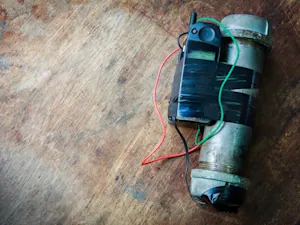
What Is 'Smurfing?' A Sneaky Trick Criminals Use to Launder Money
"Smurfing" is a term that goes beyond the popular blue cartoon creatures — it refers to a money-laundering strategy used by criminals to avoid detection by financial authorities. By splitting large sums of illicit money into smaller transactions, individuals involved in smuggling fly under the radar. This tactic has gained attention from regulators and financial institutions alike, as it threatens the integrity of the global economic system.
What Is Smurfing?
In simple terms, smurfing is a method criminals use to evade anti-money laundering (AML) regulations. To avoid triggering automatic reports for large financial transactions, they break down their dirty money into smaller deposits, transfers, or purchases. These smaller transactions are spread across multiple bank accounts, each falling below the regulatory threshold — typically $10,000 in the U.S. Any amount over this limit must be reported to authorities, which is why criminals work in smaller sums. Importantly, even if the funds are legally sourced, structuring transactions to avoid detection is still considered a severe crime.
How Does Smurfing Work?
Smurfing takes place in three stages. Initially, the illegal funds are deposited into the financial system through small, spread-out transactions, known as placement. In the next step known as layering, these transactions are moved through various accounts and institutions to disguise their origins, making it harder for investigators to trace the funds. Finally, the money is returned to the criminal through integration, often via investments in real estate, artwork, or luxury goods.
The Dangers of Smurfing
Smurfing is not just a sneaky trick — it is illegal. Although the money being laundered originates from legal sources, structuring transactions to avoid regulatory scrutiny constitutes a crime. Financial institutions must report and file suspicious activity reports (SARs) if they detect patterns of activity that seem out of place. To counter the rise in smurfing techniques, financial institutions have implemented advanced detection technologies, such as AI-based systems like aiReflex, to combat this growing threat.
Cuckoo Smurfing: A More Complex Method
A variant of this technique is called "cuckoo smurfing," where criminals exploit legitimate financial channels, such as international remittance systems. In these schemes, illicit funds are inserted into regular money transfers, making them harder to detect. The innocent party receiving the funds is usually unaware of the criminal activity behind the transaction, which adds another layer of complexity to this method.
How Financial Institutions Combat Smurfing
To counter smurfing, financial institutions monitor transaction patterns closely, looking for signs of suspicious activity. They are tasked with reporting irregularities, even if each transaction appears legitimate. As criminals evolve their methods, institutions have turned to more advanced tools, including AI and machine learning systems which monitor real-time transaction behaviors and flag suspicious activity. These tools help detect the intricate patterns of layering and structuring common in smurfing schemes.
Smurfing is a clever and dangerous tactic, but with proper monitoring and regulation, financial institutions are working hard to expose and stop these schemes.
References: What is smurfing? – Everything from methods to mitigation | What Is a Smurf and How Does Smurfing Work?























